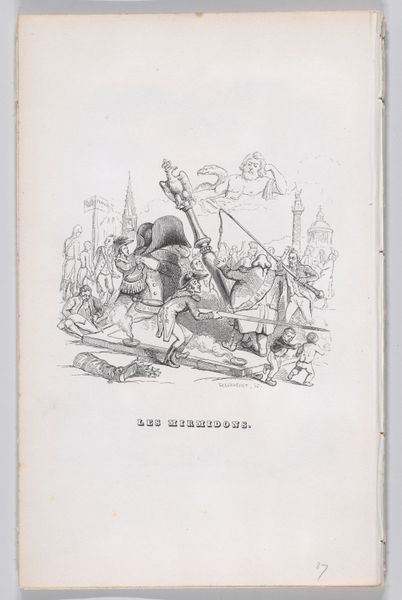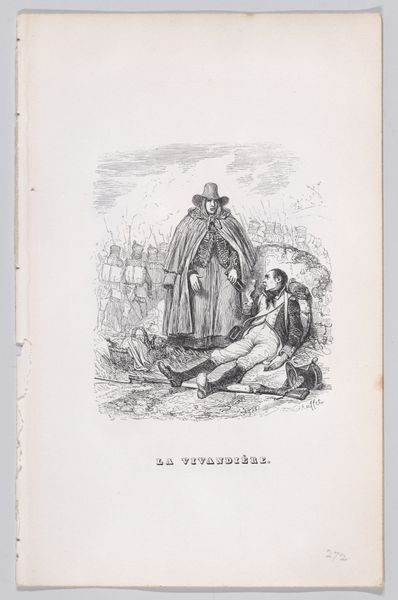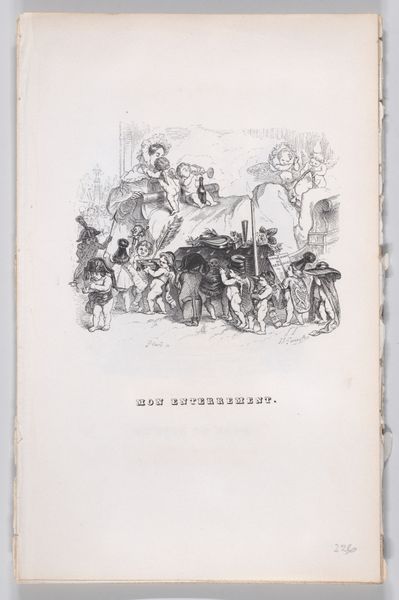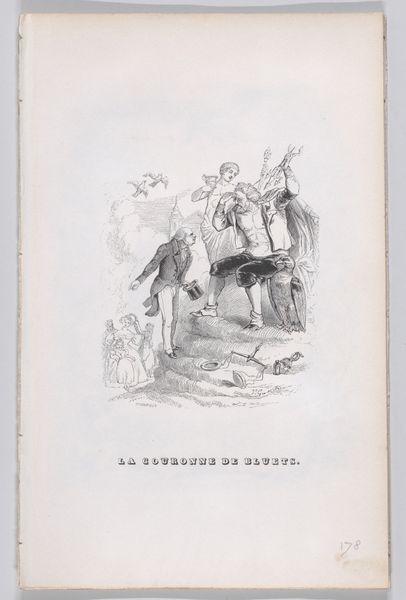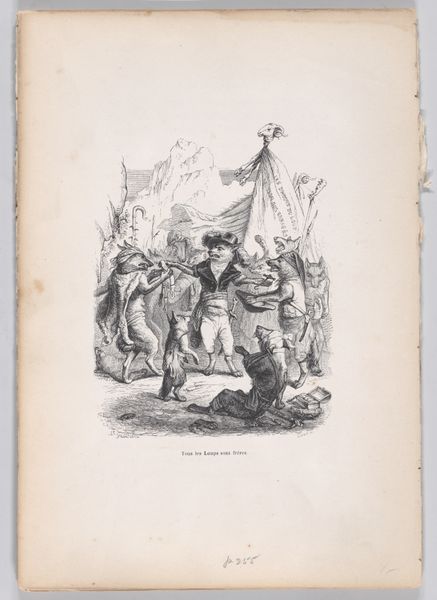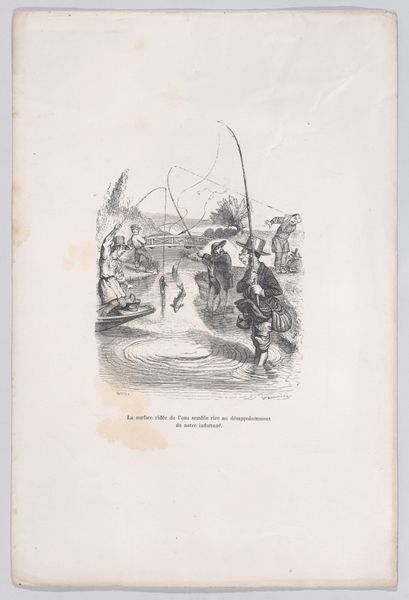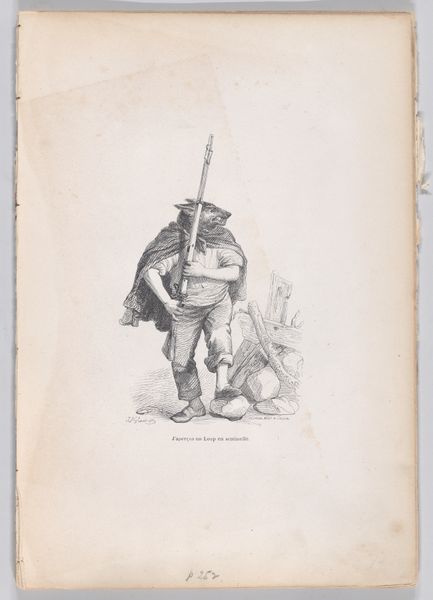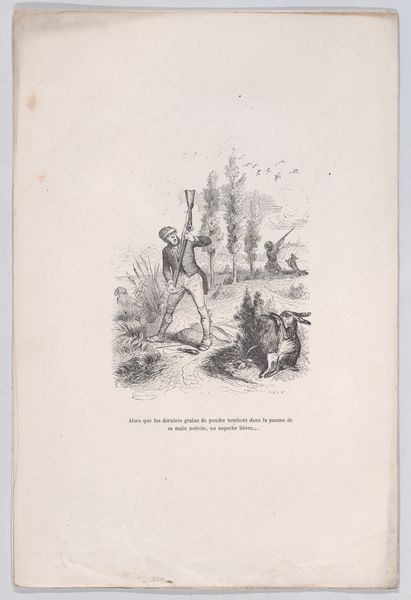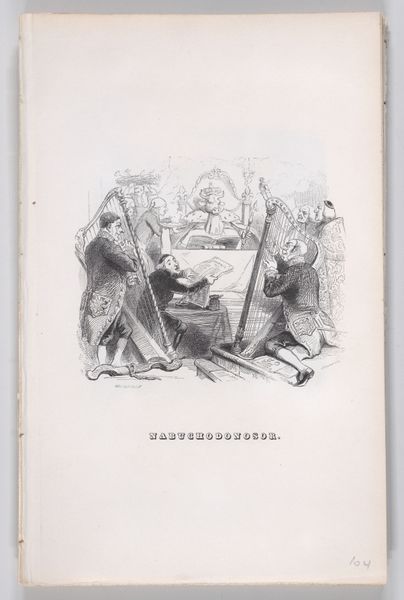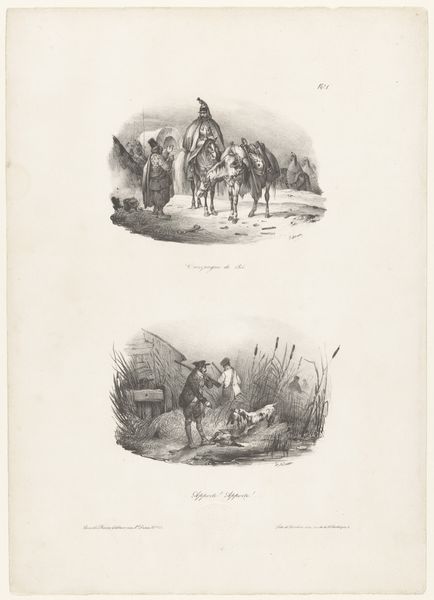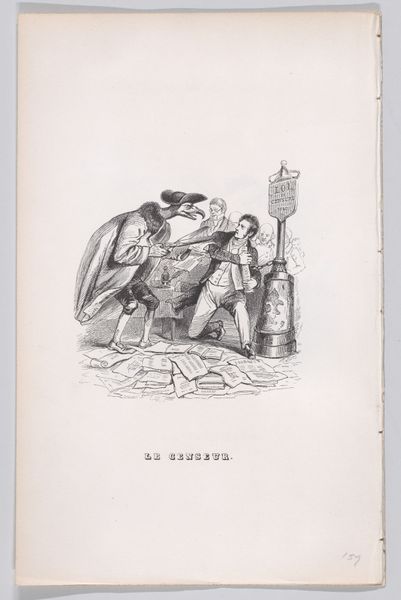
"The Smugglers" from The Complete Works of Béranger 1836
0:00
0:00
drawing, print, etching
#
drawing
# print
#
etching
#
romanticism
#
genre-painting
Dimensions: Sheet: 8 5/8 × 5 1/2 in. (21.9 × 14 cm)
Copyright: Public Domain
Curator: The artwork before us is entitled "The Smugglers" from The Complete Works of Béranger, created in 1836 by Auguste Raffet. It’s an etching, a type of printmaking, offering a glimpse into a specific genre painting style from the Romanticism era. What strikes you about it at first glance? Editor: There's a real urgency captured here, almost frantic energy in the figures' poses. The dramatic light and shadow create a somewhat unsettling mood; it suggests that whatever’s happening, it's not supposed to be. It has this immediate impact of revealing an anxiety for freedom, or for transgression. Curator: Absolutely, there's a raw dynamism at play. These 'smugglers' are captured in motion, aren’t they? Notice the one figure, mid-leap, arm extended, almost as if signalling or warning his compatriots. Smuggling, of course, isn't simply about trade. Consider what it symbolises culturally: rebellion against authority, a defiance of imposed laws. We see it echo in contemporary society as resistance, and it’s not a new sentiment. Editor: And think about who these 'smugglers' might have been. Not just opportunistic merchants evading taxes. Perhaps people facilitating the underground movement of ideas or people, challenging the prevailing order. It's interesting to contextualise Raffet's image within broader narratives of social upheaval and revolution in the 19th century. How did people at the time feel about the authorities represented here? It adds another layer to the urgency. Curator: Raffet worked during a period of great political and social unrest in France, the aftermath of the Revolution. In some ways, the “smugglers” might even resonate with more established social groups because these types of popular subjects reflected the social climate in the time, which further challenges these imposed laws and creates a symbol. This element is powerful in Romantic art. Editor: It also brings to light that the depiction romanticises what must have been quite a complex dynamic. Think about it: unregulated trade has both liberating and exploitative dimensions. It's also impossible to look at an artwork like this without considering similar clandestine activities happening in our own time. Curator: That's an important consideration. "The Smugglers" is, at its core, an exploration of liminality and of human resistance. Editor: Precisely. Thinking about it through today's lens reminds us that certain forms of transgression may stem from deeply ingrained survival instincts and push for political change. Curator: An insightful parallel. Thank you.
Comments
No comments
Be the first to comment and join the conversation on the ultimate creative platform.
